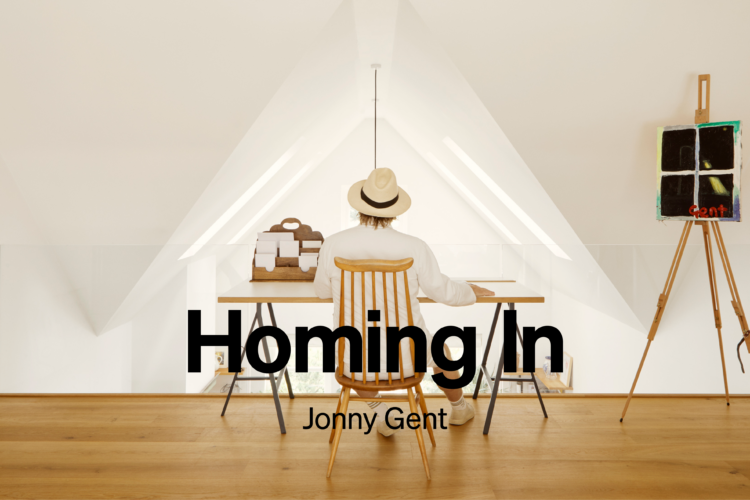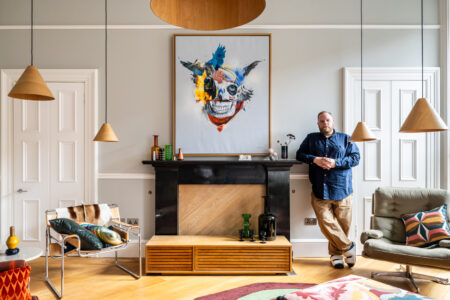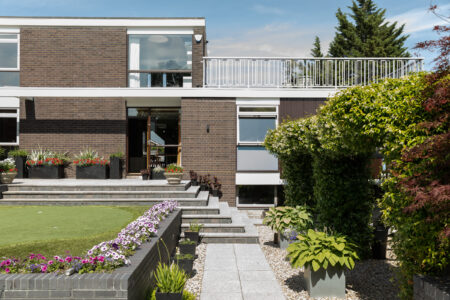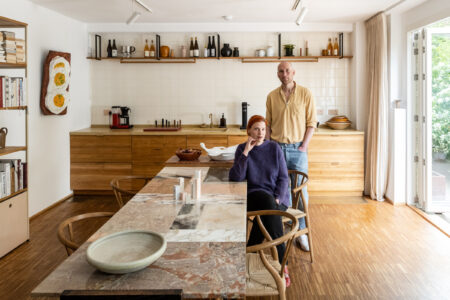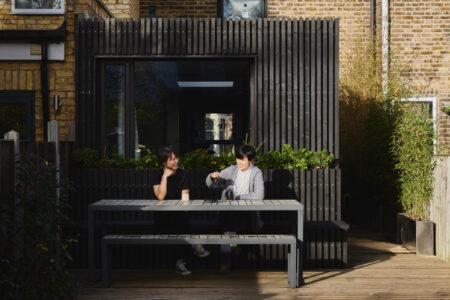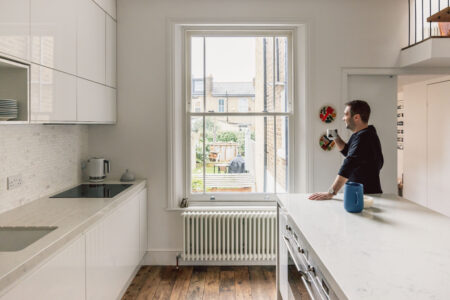An artist-curator couple on their surprising choice to leave the walls of their mid-century marvel bare

Words Wilhemina Madeley
Photography French + Tye
“It’s like living in a sculpture,” says Jane Bustin. She and her husband, David Gryn, have lived in the same mid-century house on the Southwood Estate in Highgate, north London, for the past 20 years. An artist and curator respectively, the two came across the house purely by chance after an initial purchase fell through. A modern home wasn’t necessarily what they were looking for. But then they saw the staircase: an open-tread masterpiece designed by architect Harley Sherlock. “It’s like a spiral taking you up to another world,” says Jane.
Back then, the house, which was built in 1958, looked very different. Before Jane and David moved in, a somewhat apologetic approach to the interiors had obscured many of its original features – parquet floors were covered in thick carpet, while curtains masked the full-height windows and lush garden beyond. Once they’d bought it, however, happily the couple were united when it came to the aesthetic they wanted to bring in: let the architecture do the talking.
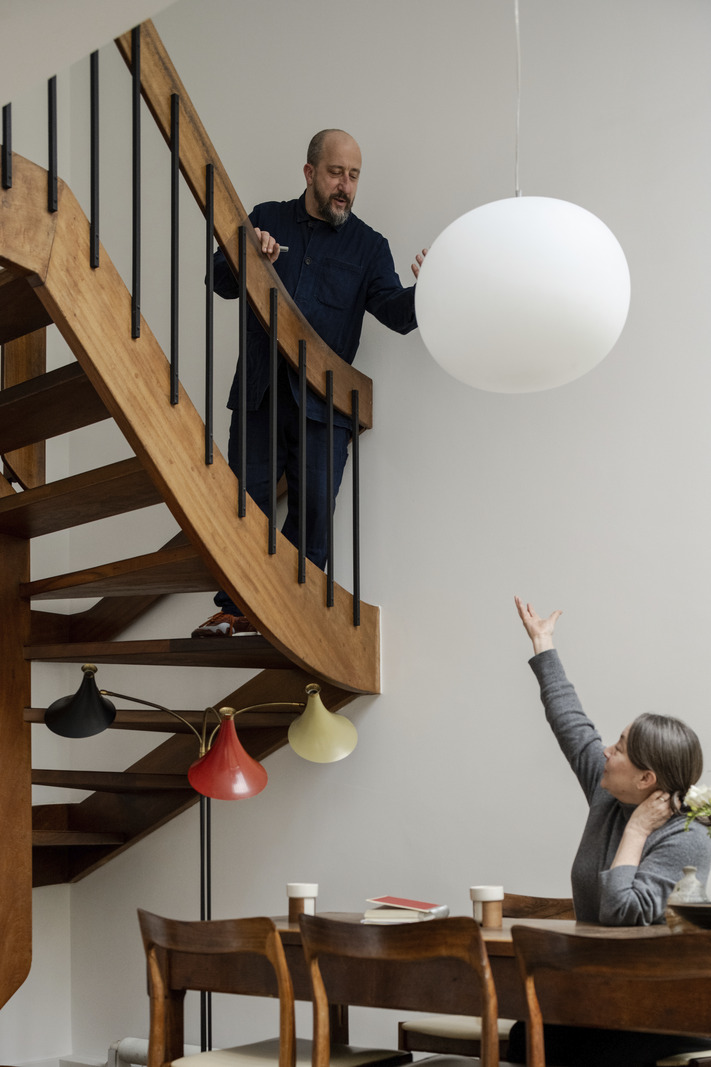
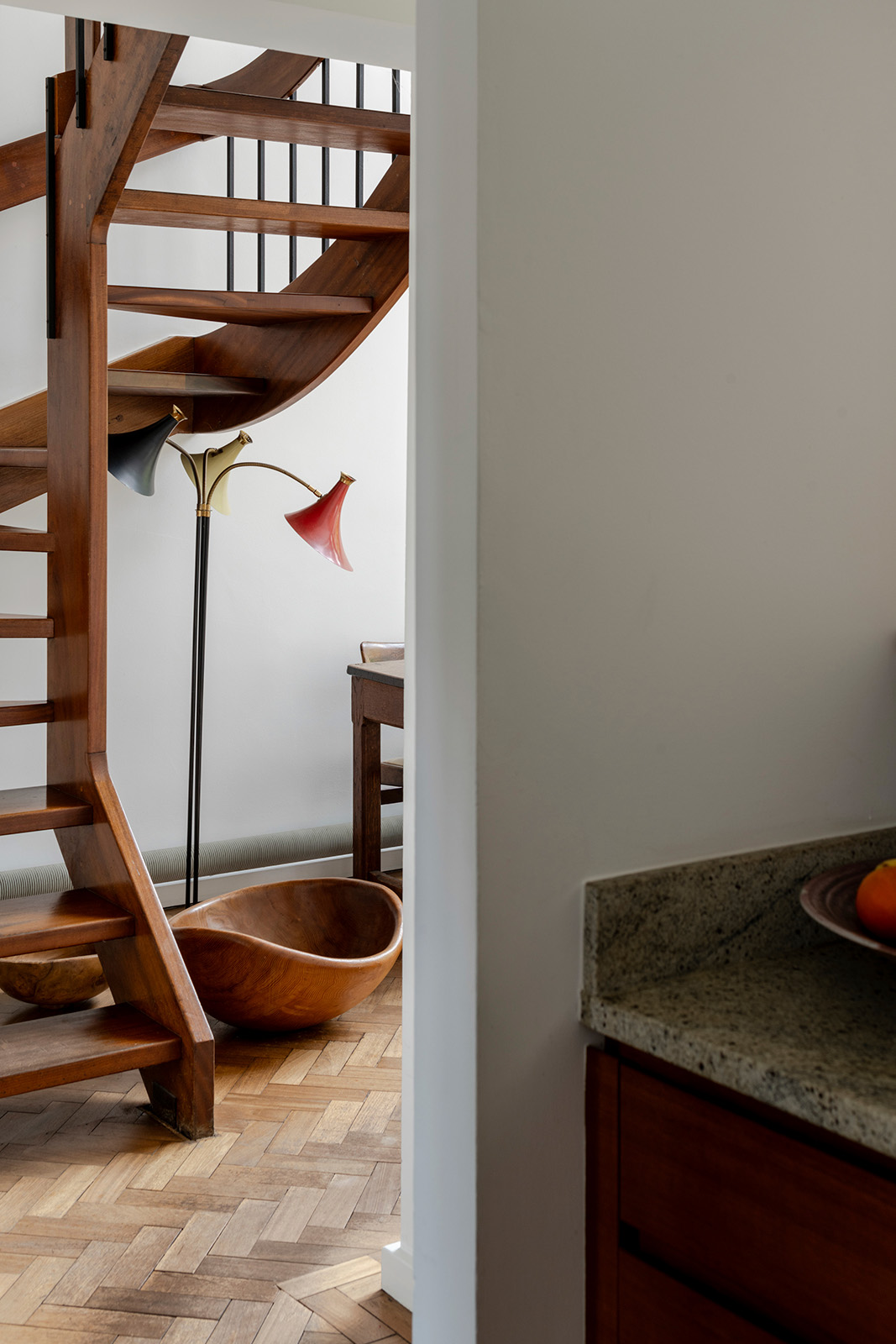
Together, they carefully excavated each room, employing a rich palette of materials and subtly reconfiguring the living spaces with the help of design studio and salvage specialists Retrouvius. Walls were purposefully left bare to created canvases for light; objects placed in situ had room to breathe. David jokes that the house pays homage to his “fetish” for wood, hence the bespoke Big Egg Designs kitchen, with its clean contemporary cabinetry.
Minimal without being minimalist, purposeful without being contrived, this is a home for living – one in which Jane and David happily raised two young children until they eventually flew the nest. Jane speaks fondly of the moment she realised the house fitted with her ideas for the future, recalling her first visit to the communal gardens: “Suddenly I could just see this lifestyle for my family.” Set on the site of Southwood House, which burned down in the 1950s, the gardens she’s talking about are more like a woodland, inhabited by mature trees and a palpable sense of magic. This is something fostered by residents: a dedicated patio for entertaining, nicknamed ‘the castle’ by neighbouring children, hosts parties twice a year, for instance. It’s clear that the estate’s optimistic post-war ethos lives on in those who are lucky enough to live there.
Jane and David are now, however, looking to move on. As they prepare to do so and put the house on the market, we talk to them about life – and light – in this remarkable family home.



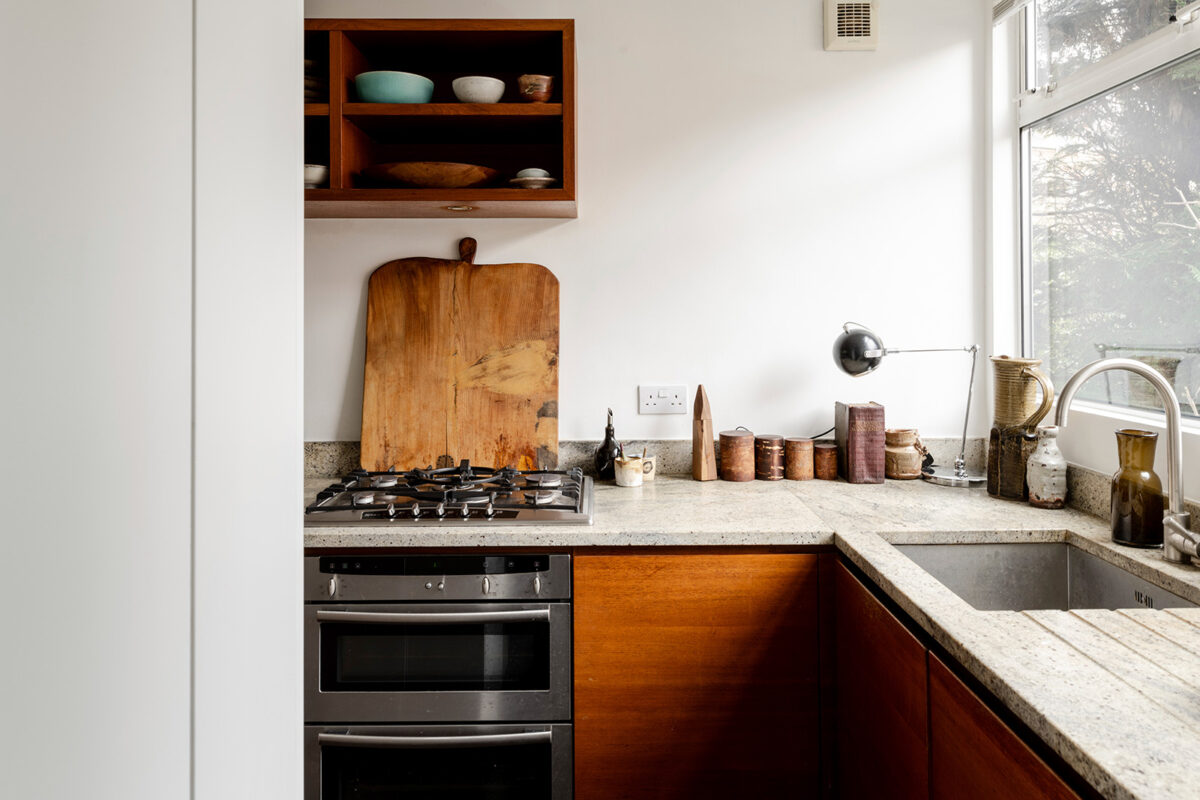

Jane: “When we first viewed the house, it was furnished very traditionally, in a way that hid so much of the house. My initial impression as I walked in was that it was a bit dark and small, which of course was completely wrong. And then I saw the staircase and just thought, ‘Oh my God.’”
David: “It had been decorated with thick carpets and curtains, which were closed when we arrived. Walking round, we opened them up to find all this green from the garden. And this light!”
Jane: “And then we saw the communal gardens. At the time we had two boys, aged seven and four, for whom we knew it would be perfect. We could be in the house and you could throw the boys out to this this beautiful shared space, which eventually became the meeting place for other children.
“The biggest thing we decided to change was the kitchen. It was completely separate from the rest of the downstairs spaces, which was quite annoying when we had people for dinner. You either felt like a 1960s hostess, having to have everything ready before people arrived, or you spent way too much time in the kitchen, missing out on the party, so we added an opening through to the living room. We added a glass pane in the living area too, to make it feel cosier. I love reflective surfaces; here, I particularly love the way you can see the reflection of the gardens as you walk through the front door.”



David: “All that glass allows the light to filter through the space. It makes the interiors even more inviting. And we’ve only had a few incidents where people decided to try and walk through the glazing…”
Jane: “We wanted to combine different materials, which is why there’s such a mix of wood, glass, emulsion paint and metals. Together, they create a deep tapestry of surfaces that have and will become richer over time.
“We chose to keep the walls bare because the garden is so visually rich. Because it’s on a slope, when you sit in the dining room and look out, the entire window is filled with different greens. In a sense that’s your picture. Anything on the wall would fight with that.”
David: “When you place something on the wall, you’re breaking up the light. That wall is intrinsically beautiful, so what could you put on there that makes it better?”



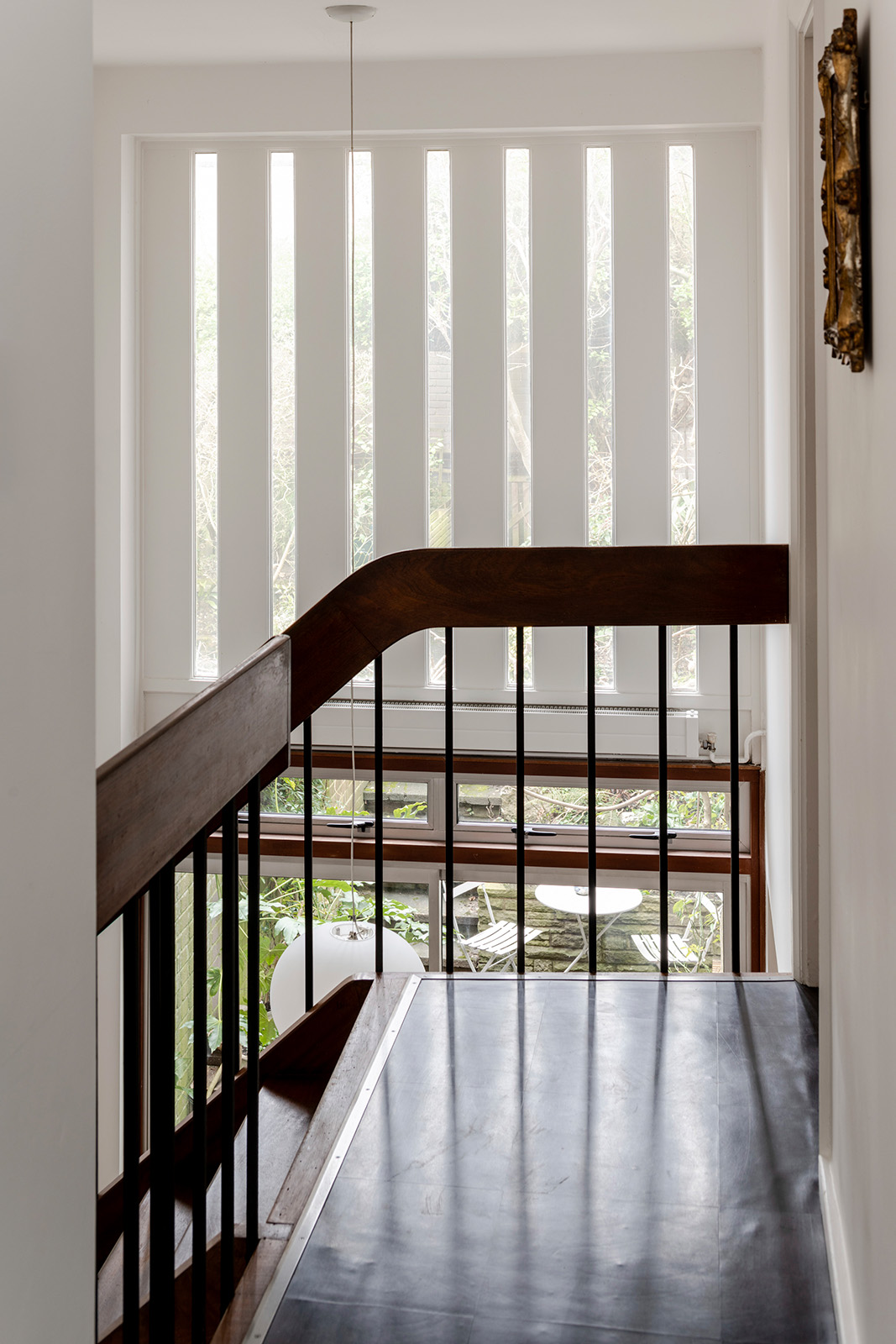
Jane: “I collect quite a lot of ceramics and I make them too, as part of my practice. Having objects against the white walls within an empty space – rather than paintings or other hangings on them – just seems to suit these houses better.
“There’s a tendency in people to aspire to live in large homes, large buildings, large rooms. But when you create something human-sized, like this house is, it’s very comfortable. It encourages warm relationships.”
David: “Often, I go to other people’s homes and I feel like maybe I should love theirs more than I love mine, because it’s bigger or grander or more opulent. But I don’t. I’ve always felt content. That’s what this home makes me feel: content.”
Jane Bustin’s solo show, ‘Pirelli, let me count the ways’, is on display at Copperfield, Copperfield St, London SE1, until 7 March
